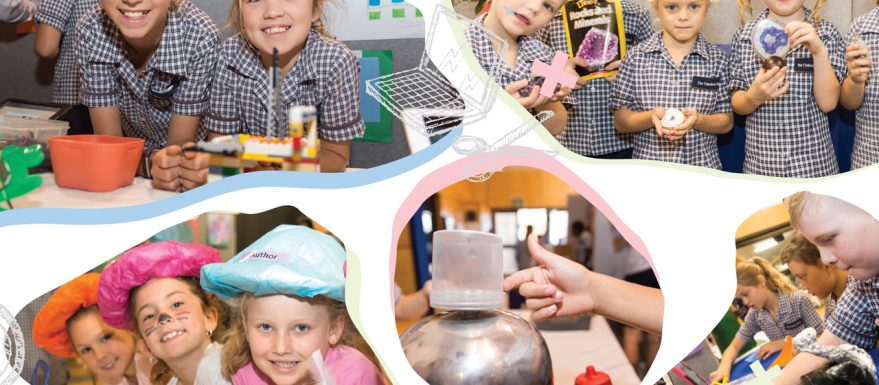Today’s Investigators. Tomorrow’s Achievers.

What’s the first step in preparing our young students to be successful in the future? Well, we start by preparing the student for the road, not preparing the road for the student. To do this, we need to teach our students how to learn. And research shows the best way to do that is to let the student take the steering wheel.
Last month, The Cathedral School’s Junior School (Kindergarten to Year 6) opened its doors to showcase students’ Investigations and Educational Research Projects to parents, the community and the media. Designed as a tradeshow-style exhibition, the Wonder Walk had 460 students spend the morning educating visitors about their various exhibits – which encompassed learning areas of History, Geography, Art, Technology, Science, Mathematics and English. Few boundaries were placed on topics.
Older students, Years 3 to 6, showcased individual Educational Research Projects (ERPs), while younger students, Kindergarten to Year 2, showcased Investigations either conducted as groups or as whole-class cohorts. The impressive exhibits varied from why volcanoes exist and how they function, to growing crystals, exploring the Fibonacci sequence, living and non-living things in relation to wearable art, the journey of single-use straws, detailed book reviews, foreign architecture, even why Uranus is blue, and so much more. One Kindergarten class even researched how to make ice cream, and served 300 samples at their class exhibit. Critically, each project was unique, each project was completed at school and involved detailed, deep research into the chosen topic.
The purpose behind the Wonder Walk and its collection of investigations and ERPs is to promote learning through natural curiosity and wonder in all young students.
“You know yourself, that when you’re passionate about something, when you have a genuine curiosity, the engagement level goes up,” says Rachael Hood, Director of Teaching for Year 3 to Year 6. “Then once you’re engaged, the learning is deep and relevant. It’s then the teacher’s job to make the curriculum links.”
Director of Teaching for Kindergarten to Year 2, Amanda Banister says it’s important to note that these investigations and ERPs are not just extending a child’s interest per se, “but tapping into the interest as a catalyst to make the link to the curriculum. We are using the child’s interest to heighten engagement,” says Amanda.
Some students have even requested to continue work on their ERPs beyond the Wonder Walk says Rachael. “One of our students, Zeb in Year 3, created a model of the Earth’s rotation, with a light in his model sun. He will continue problem solving his project next term with our Technologies teacher Mr Dallimore, working with the gears to get his rotation right. At first it was spinning too fast, then it couldn’t hold the weight so wasn’t spinning fast enough,” she says.
“We are using the child’s interest to heighten engagement.”
– Amanda Banister
“The difference we’ve seen in the projects from last year [when the school held its inaugural annual Wonder Walk] to this year is remarkable,” continues Rachael. “Not only in the quality and depth of the students’ exhibits, but in the students’ ability to stand confidently, make eye contact with their audience and talk about their learning was outstanding. The students’ metacognition was exceptional.”
“We talk a lot about transferable skills that the children are learning during their investigations and ERPs,” adds Amanda. “The skills that are required in order to complete it, then showcase their learning, talk about their learning, and think about their learning – it’s transferable from context to context, subject to subject.”
What will it take to be successful in the future? We can’t know for absolute sure, but all signs point to the attributes of critical thinking, creativity, active participation and self-directed learning, as well as those all-important soft skills we hear so much about (people skills, communication skills and emotional intelligence).
The Cathedral School regards these as Attributes of a Cathedral Learner, and uses these Investigations and Educational Research Projects to give students considerable opportunity to develop these. The end goal? To support students in becoming well-rounded, highly motivated and informed members of a future society.






